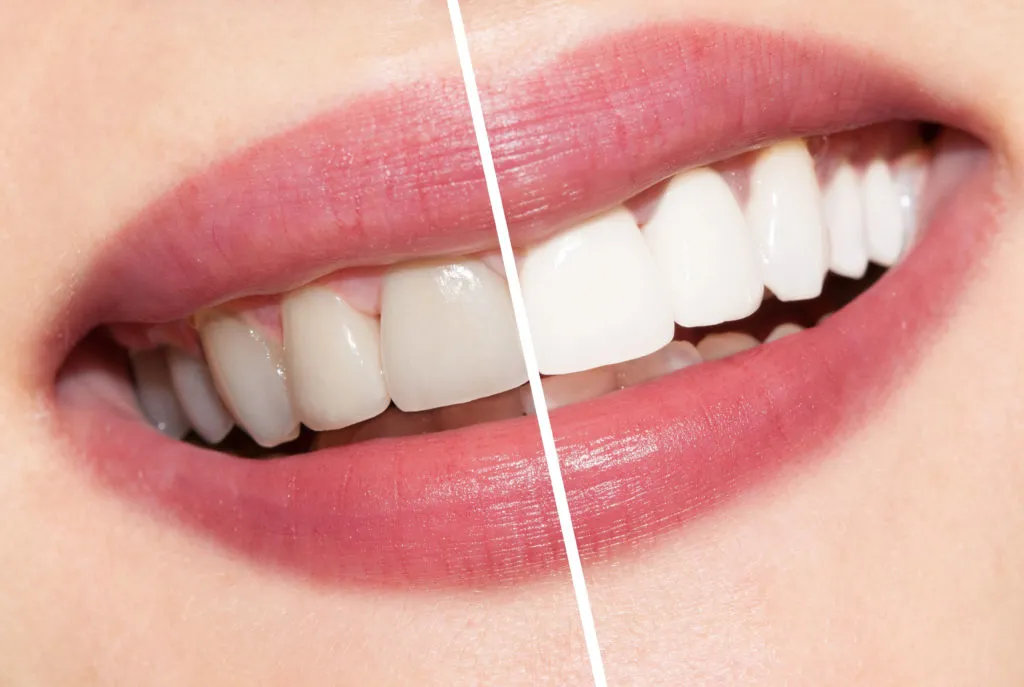Understanding the Link Teeth Whitening and Cavities
Teeth whitening and cavities, seemingly unrelated, are intertwined aspects of oral health. The quest for a brighter smile often leads individuals to explore teeth whitening options, while the presence of cavities can complicate the process and impact the overall effectiveness and safety of whitening treatments. Understanding the interplay between these two conditions is crucial for maintaining a healthy, radiant smile. This guide delves into the relationship between teeth whitening and cavity prevention, offering valuable insights and practical advice to help you achieve both a dazzling smile and optimal oral health. This comprehensive approach ensures that your pursuit of a brighter smile doesn’t compromise the health of your teeth; instead, it enhances it.
How Teeth Whitening Affects Cavity Risk
Teeth whitening procedures can potentially impact the risk of developing cavities. The primary methods used for whitening involve the use of bleaching agents, such as hydrogen peroxide or carbamide peroxide. These agents work by penetrating the enamel and breaking down stain molecules. However, this process can also affect the enamel’s structure to a degree, potentially making the teeth more susceptible to acid attacks from bacteria and food, which can lead to cavities. It’s essential to be aware of these effects and take preventative measures to protect your teeth during and after whitening treatments. Proper oral hygiene, dietary choices, and regular dental check-ups are crucial in mitigating any increased cavity risk associated with teeth whitening.
The Science Behind Tooth Discoloration
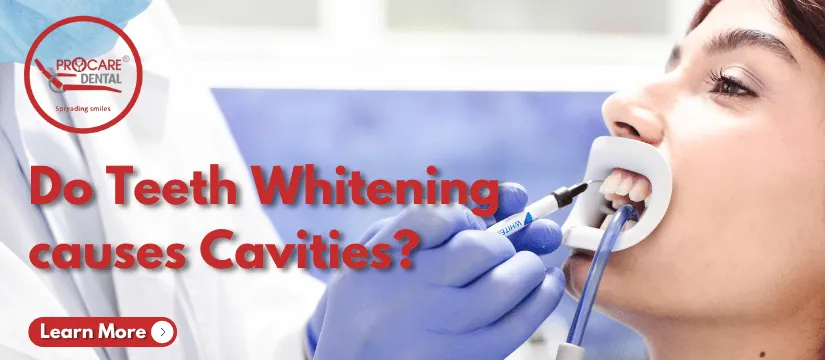
Tooth discoloration arises from various factors, including extrinsic and intrinsic causes. Extrinsic stains occur on the tooth’s surface, often due to the consumption of staining foods and drinks like coffee, tea, and red wine, or from smoking. Intrinsic stains originate within the tooth structure, often caused by factors such as aging, trauma, or certain medications, like tetracycline. Understanding the nature of these stains is vital because different whitening methods target these distinct types of discoloration differently. Surface stains might respond well to over-the-counter whitening products, while intrinsic stains might require professional treatments to achieve the desired results. The science behind tooth discoloration informs the best approaches to both whitening and cavity prevention, helping to maintain a healthy, aesthetically pleasing smile.
Common Teeth Whitening Methods
Various teeth whitening methods cater to different needs and preferences. Over-the-counter options include whitening toothpaste, strips, and gels, which offer convenience and affordability. These typically contain lower concentrations of bleaching agents and are suitable for mild stains. For more dramatic results, professional whitening treatments administered by a dentist are available. These treatments use higher concentrations of bleaching agents and can be combined with specialized light or laser technology to accelerate the whitening process. Furthermore, custom-fitted trays provided by a dentist offer a middle ground, allowing for at-home whitening with stronger solutions under professional guidance. The choice of method depends on the severity of the discoloration, individual preferences, and budget. Proper consideration of these options ensures that the chosen method effectively whitens the teeth while minimizing any potential risks.
Impact of Whitening on Enamel
Teeth whitening can impact the enamel, the outermost protective layer of the tooth. The bleaching agents used in whitening treatments, such as hydrogen peroxide, can temporarily dehydrate the enamel and make it more porous. This can increase sensitivity and potentially make the teeth more susceptible to staining. However, with proper care and precautions, these effects are usually temporary. Dentists often recommend using fluoride treatments and desensitizing toothpaste to remineralize the enamel and reduce sensitivity. Furthermore, avoiding highly acidic foods and drinks and maintaining excellent oral hygiene can help protect the enamel during and after whitening. By understanding the impact of whitening on the enamel and taking appropriate steps, individuals can achieve a brighter smile while preserving the health and integrity of their teeth.
Preventing Cavities During Whitening
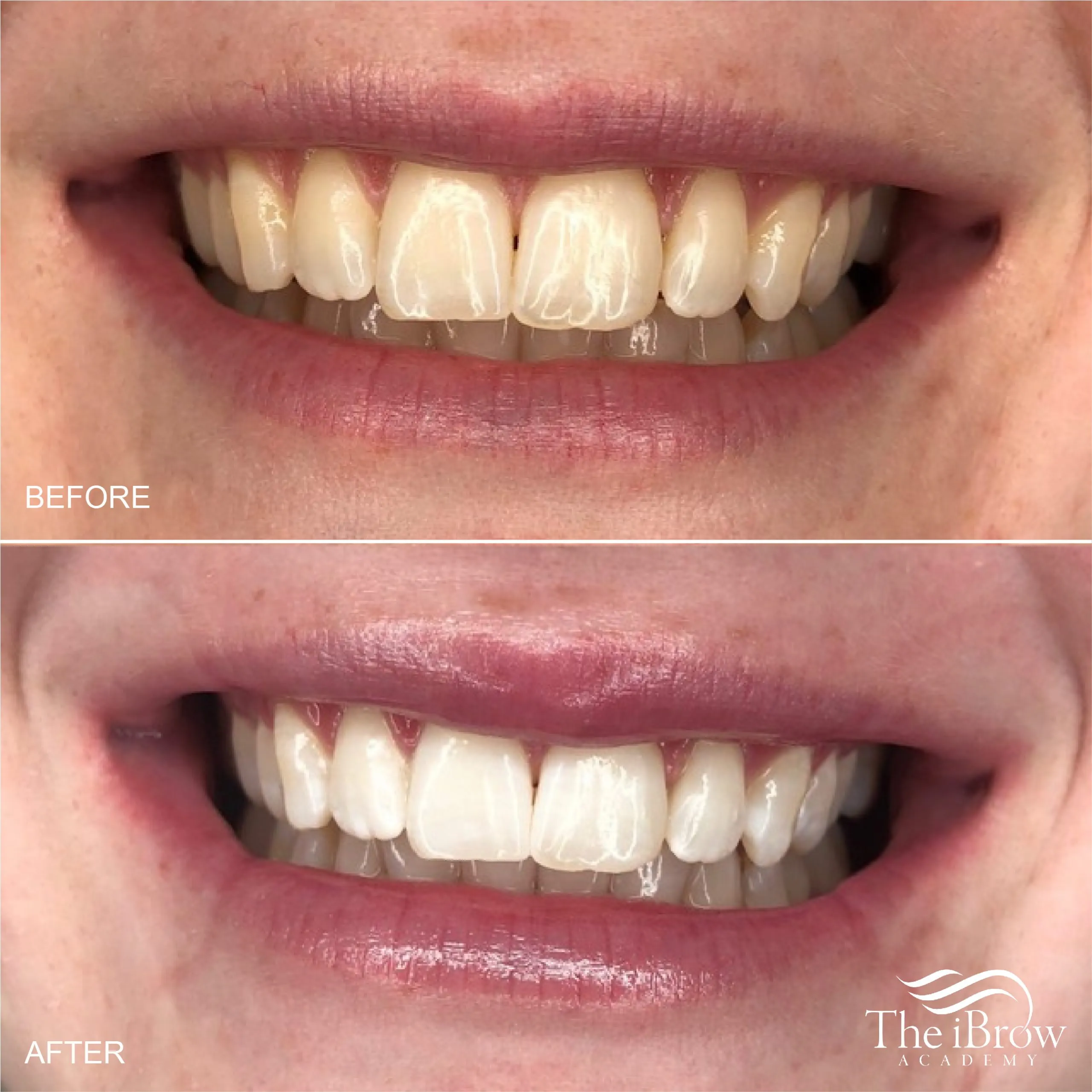
Preventing cavities is particularly important during teeth whitening to maintain overall oral health. Since whitening treatments may temporarily increase sensitivity and make teeth more vulnerable, it is important to implement a preventative approach. This involves a combination of diligent oral hygiene, careful dietary choices, and the use of protective treatments. By focusing on these areas, individuals can effectively minimize the risk of cavities and ensure that their teeth remain healthy and strong throughout the whitening process. This proactive strategy helps to maintain a bright smile and safeguard against the potential negative impacts of whitening treatments.
Proper Oral Hygiene Routine
A consistent and thorough oral hygiene routine is the cornerstone of cavity prevention during teeth whitening. This includes brushing teeth twice daily with fluoride toothpaste, flossing once a day to remove plaque and food particles from between the teeth, and rinsing with an antiseptic mouthwash to eliminate bacteria. Brushing for two minutes each time is essential, ensuring that all tooth surfaces are cleaned effectively. Choosing a soft-bristled toothbrush can help protect the enamel from abrasion, while fluoride toothpaste strengthens the enamel, making it more resistant to acid attacks. Regular flossing is crucial for reaching areas that the toothbrush cannot access, preventing plaque build-up and reducing the risk of cavities. Consistency is key in maintaining a clean and healthy mouth, thus protecting the teeth while they undergo whitening treatments.
Dietary Considerations for Cavity Prevention
Diet plays a crucial role in cavity prevention, especially during teeth whitening. Limiting the consumption of sugary and starchy foods and drinks is essential, as these contribute to the formation of plaque and acids that erode tooth enamel. Sugary snacks, candies, and sweetened beverages should be consumed sparingly, and it’s advisable to rinse the mouth with water after consuming them. Instead, focus on incorporating a balanced diet rich in fruits, vegetables, and calcium-rich foods like dairy products or fortified alternatives. These foods promote saliva production, which helps to neutralize acids and remineralize the enamel. Additionally, drinking plenty of water throughout the day helps to wash away food particles and keep the mouth hydrated, reducing the risk of cavities. Conscious dietary choices can make a significant difference in protecting teeth during whitening.
Fluoride Treatments and Their Benefits
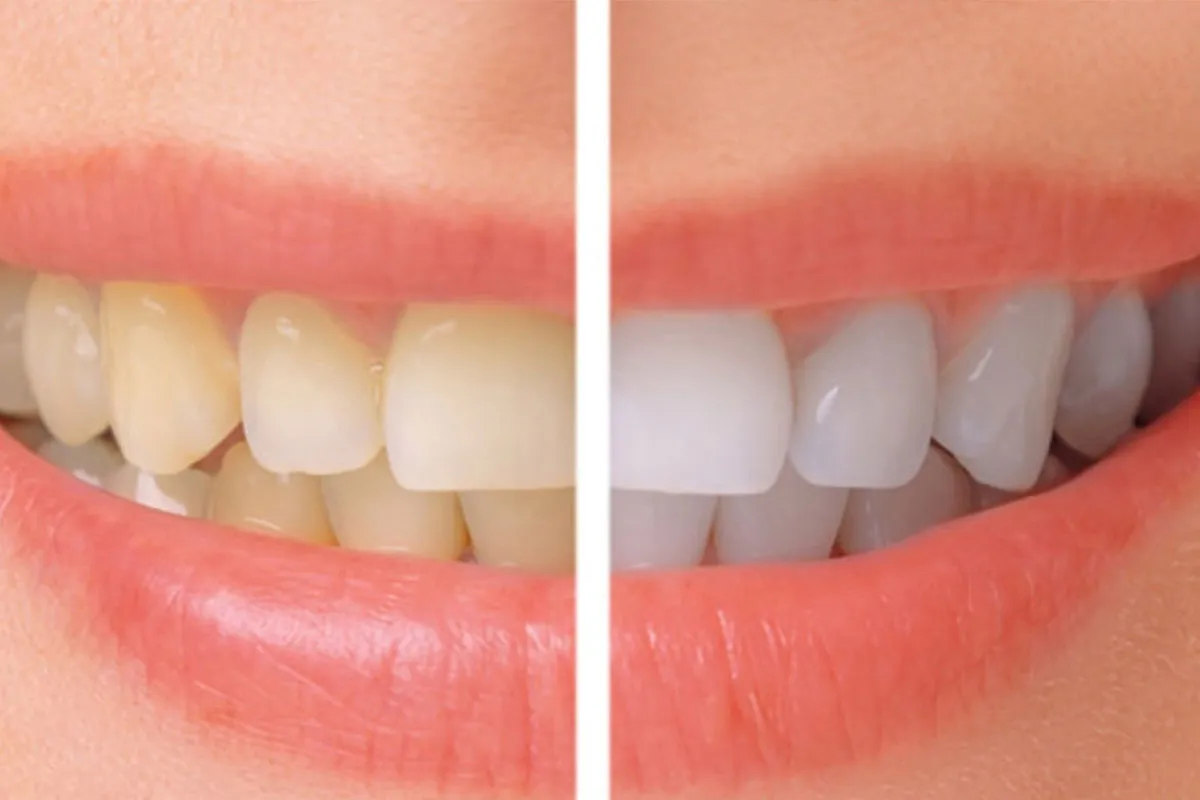
Fluoride treatments are highly beneficial in strengthening tooth enamel and preventing cavities, particularly during and after teeth whitening. Fluoride works by remineralizing the enamel, making it more resistant to acid attacks from bacteria. Dentists often recommend professional fluoride treatments, which provide a higher concentration of fluoride than over-the-counter products. These treatments can be applied during routine dental check-ups and are especially helpful for individuals undergoing whitening treatments. In addition to professional treatments, using fluoride toothpaste and mouthwash daily can further enhance protection. Fluoride is a crucial component in any cavity prevention strategy, offering significant benefits for maintaining strong, healthy teeth and helping to counteract the potential weakening effects of whitening procedures.
Choosing the Right Teeth Whitening Products
Selecting the right teeth whitening products is essential for both achieving desired results and safeguarding oral health. The market offers a variety of options, including toothpaste, strips, gels, and professional treatments. When choosing a product, it’s important to consider factors such as the concentration of the whitening agent (usually hydrogen peroxide or carbamide peroxide), the duration of use, and any potential side effects, such as tooth sensitivity. For those with a history of cavities or sensitive teeth, consulting a dentist before starting any whitening treatment is highly recommended. The dentist can assess the individual’s oral health, recommend the most appropriate products, and provide guidance on how to use them safely. This ensures that the whitening process is effective and minimizes the risk of any adverse effects, allowing for a brighter smile without compromising oral health.
Professional Whitening vs At-Home Kits
The decision between professional whitening and at-home kits depends on individual needs, preferences, and oral health conditions. Professional whitening, performed by a dentist, typically involves higher concentrations of bleaching agents and can provide faster and more dramatic results. It also offers the advantage of professional supervision, which helps to minimize risks and address any potential issues. At-home kits, on the other hand, are generally more affordable and convenient, but they may take longer to achieve the desired results. They usually contain lower concentrations of bleaching agents and may not be suitable for everyone. For individuals with existing cavities, gum disease, or sensitive teeth, professional whitening is often the safer option, as a dentist can assess the oral health and address any underlying issues before starting the whitening process. Consulting with a dentist is the best way to determine which option is right for you, balancing effectiveness, safety, and convenience.
Ingredients to Look for and Avoid
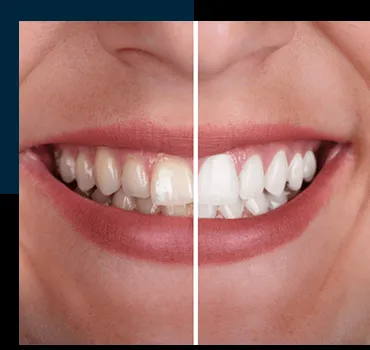
When choosing teeth whitening products, it’s important to be aware of the ingredients. Look for products that contain effective whitening agents, such as hydrogen peroxide or carbamide peroxide, as the active ingredients. These ingredients are responsible for breaking down the stain molecules and brightening the teeth. Also consider products that include fluoride, which can help to strengthen the enamel and reduce sensitivity. Conversely, it’s best to avoid products containing harsh abrasives, as they can erode the enamel and potentially increase tooth sensitivity. Always check the product’s label for any potential allergens or ingredients that might cause irritation. Consulting with a dentist or dental hygienist can provide personalized recommendations based on individual oral health needs, ensuring that the selected products are both effective and safe.
Top Foods and Drinks to Avoid
Certain foods and drinks can stain teeth and increase the risk of cavities, and it’s important to limit or avoid them, especially during and after teeth whitening. Coffee, tea, red wine, and dark-colored sodas are notorious for staining teeth. These beverages contain pigments that can easily adhere to the enamel, causing discoloration. Additionally, sugary and acidic foods and drinks, such as candies, processed snacks, and citrus juices, contribute to the formation of plaque and acid attacks, leading to cavities. While enjoying these items occasionally is acceptable, it’s important to practice moderation. After consuming staining or acidic foods and drinks, rinsing the mouth with water can help to minimize their impact. Maintaining a balanced diet, focusing on cavity-preventative foods, and practicing good oral hygiene are essential for protecting the teeth while whitening and preserving a bright smile.
Maintaining a Bright Smile and Healthy Teeth
Maintaining a bright smile and healthy teeth is a continuous effort that extends beyond teeth whitening treatments. It requires a holistic approach that integrates excellent oral hygiene practices, a balanced diet, and regular dental check-ups. Consistent care and attention contribute to long-term oral health and the preservation of a beautiful smile. By adopting these habits, individuals can ensure that their teeth remain healthy, strong, and visually appealing for years to come. This approach not only enhances the aesthetic appearance of the teeth but also prevents the onset of common dental problems, such as cavities and gum disease, ultimately improving the overall quality of life.
Regular Dental Checkups and Cleanings

Regular dental checkups and cleanings are crucial for maintaining a bright smile and preventing cavities. Professional cleanings performed by a dentist or dental hygienist remove plaque and tartar, which regular brushing and flossing cannot always eliminate. Plaque and tartar buildup can lead to cavities, gum disease, and other oral health problems. During a checkup, the dentist examines the teeth and gums for any signs of decay, infection, or other issues. Early detection and treatment of dental problems are essential for preventing more serious complications. The dentist might also offer advice on proper oral hygiene techniques and recommend any necessary treatments, such as fluoride applications. Regular checkups and cleanings are a proactive way to maintain a healthy, bright smile and catch any potential issues early, which saves both time and money.
Long-Term Cavity Prevention Strategies
Long-term cavity prevention requires a consistent and multifaceted approach that combines various strategies. Implementing a comprehensive oral hygiene routine, including brushing and flossing daily, is essential for removing plaque and food particles that contribute to cavity formation. Following a balanced diet that limits sugary and acidic foods is also crucial, as these substances erode tooth enamel. The use of fluoride, through toothpaste, mouthwash, or professional treatments, strengthens the enamel, making it more resistant to decay. In addition, consider the use of dental sealants, which act as a protective barrier on the chewing surfaces of the teeth, preventing bacteria from reaching and causing cavities. Regular dental check-ups and cleanings are also vital for early detection of any dental problems. By consistently applying these strategies, individuals can significantly reduce their risk of cavities and maintain a healthy, bright smile over the long term.
The Role of Dental Sealants
Dental sealants play an important role in long-term cavity prevention, particularly for children and adolescents. Sealants are thin, protective coatings applied to the chewing surfaces of the back teeth (molars and premolars). These surfaces have deep grooves and pits that can be difficult to clean thoroughly with a toothbrush, making them susceptible to cavities. Sealants act as a barrier, sealing off these grooves and pits and preventing food and bacteria from getting trapped, thus reducing the risk of decay. Applying sealants is a quick and painless procedure that can be completed during a routine dental visit. While sealants are most commonly used in children, they can also benefit adults who are prone to cavities. Regular checkups are essential to ensure the sealants remain intact. By using dental sealants, individuals can provide additional protection to their teeth, helping to maintain a healthy, cavity-free smile for years to come.
